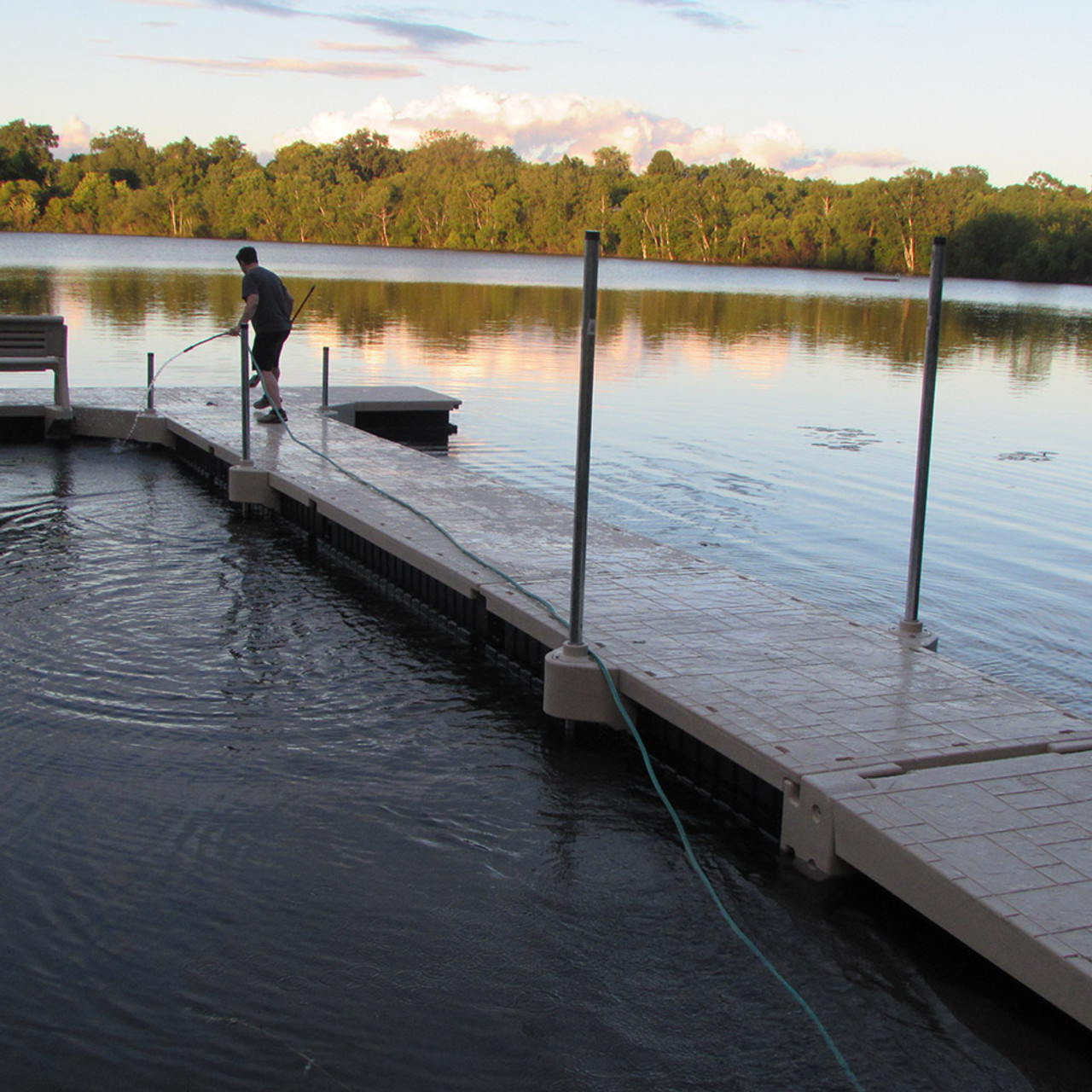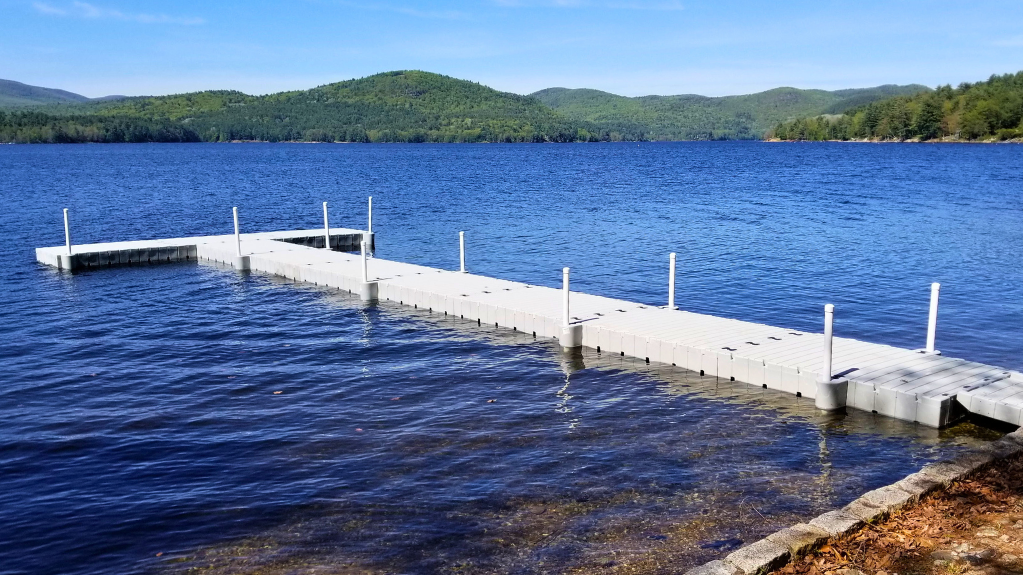Benefits of Working with a Developed Floating Dock Company for Assurance
Produce the Perfect Docking Option With Floating Docks
Floating docks existing a versatile service for a range of maritime requirements, adjusting effortlessly to rising and fall water degrees and diverse vessel types. As we explore the important aspects that add to the performance of floating docks, a number of crucial elements pertaining to stability and upkeep will emerge, increasing inquiries regarding exactly how to maximize your docking experience.

Advantages of Floating Docks
Floating docks offer numerous advantages that make them a suitable choice for various maritime applications. Unlike taken care of docks, floating docks rise and autumn with the tide, guaranteeing constant ease of access for vessels.
Additionally, floating docks are generally simpler and quicker to mount compared to conventional set structures. Their modular design enables uncomplicated assembly and disassembly, promoting upkeep and moving when necessary. This adaptability is specifically helpful for temporary applications or in settings where conditions might change.
Floating docks also tend to be more eco-friendly, as they decrease interruption to the seabed and bordering water communities. Their buoyant nature lowers the danger of damages to aquatic life, promoting a healthier setting. Furthermore, these docks can be tailored to suit numerous vessel dimensions, ensuring that they meet certain functional needs - floating dock company.
Ultimately, the combination of versatility, simplicity of installment, and ecological considerations makes floating docks a highly efficient option for a large range of maritime demands.
Picking the Right Products
Choosing the suitable products for floating docks is vital to guarantee durability, stability, and resilience. The choice of materials directly affects the dock's efficiency in various environmental conditions, including exposure to water, sunshine, and potential wear from aquatic traffic.
Common materials made use of for floating docks include light weight aluminum, wood, and high-density polyethylene (HDPE) Aluminum is lightweight, corrosion-resistant, and calls for marginal upkeep, making it an exceptional selection for durability. Its initial expense can be greater compared to various other materials.
Timber, while aesthetically attractive and supplying a traditional appearance, can be prone to rot and pest damages if not effectively treated. Using pressure-treated timber or naturally long lasting types like cedar or redwood can minimize these concerns.
HDPE is a prominent option because of its resistance to UV rays and chemicals, along with being ecologically friendly. floating dock services. It is available and lightweight in different shades, enabling modification
Eventually, the ideal product selection will depend on particular demands, including budget plan, preferred looks, and ecological considerations. Cautious evaluation of these aspects will lead to a effective and resilient floating dock option.
Design Factors To Consider for Security
When creating floating docks, making certain security is an essential element that can considerably affect their capability and safety and security. Security in floating dock layout is affected by different aspects, consisting of buoyancy, weight distribution, and the arrangement of elements.
Weight distribution is critical; uniformly dispersing lots across the dock stops turning and improves security. This can be accomplished via critical placement of docking equipment, such as cleats and fenders, in addition to correct spacing of floats. Additionally, the measurements of the dock should be attentively prepared. Broader styles check out here can use boosted stability, especially in rough water problems, while longer docks might require extra assistances to protect against sagging.
An additional vital factor to consider is the environmental impact, including wave activity and wind. Including functions such as sidewalls or skirting can help minimize the effects of environmental forces, keeping security in adverse conditions. Inevitably, a mix of thoughtful style, material selection, and understanding of environmental factors will yield a drifting dock that meets both security and safety and security needs.
Installment Tips and Methods

Next, secure the essential licenses and stick to neighborhood guidelines, which might dictate installation methods and environmental factors to consider. Engage a qualified professional experienced in floating dock installations if needed. Use top notch materials made for marine environments to improve longevity and longevity.
When positioning the dock, straighten it parallel to the coastline to help with very easy access. Make certain that the anchoring system is robust, using cinder block or helical anchors to support the dock against wind and wave action. It's essential to account for seasonal water degree changes, including prospective ice motion in chillier environments.
Throughout the installation, verify the dock's floatation and security prior to wrapping up the anchoring. Regularly evaluate the installment for any indications of wear or damage. By complying with these techniques and tips, you can achieve a safe and secure, practical, and aesthetically pleasing floating dock setup that satisfies your requirements.
Upkeep and Care Guidelines
Caring and keeping for floating docks is critical to lengthening their lifespan and making certain risk-free usage. Routine examinations must be conducted to recognize any type of signs of wear, damage, or aquatic growth. Seek fractures, loosened fittings, or blemished areas on the dock's surface area, as these concerns can jeopardize structural honesty.
Cleaning is necessary. Utilize a stress washer to get rid of algae, barnacles, and particles, which can build up with time. For persistent development, consider eco-friendly cleansing agents that won't damage water life.
Additionally, check the mooring lines and anchors often to guarantee they are cost-free and safe from corrosion. Change any torn or harmed lines without delay to maintain security.
During severe weather, such as storms or freezing problems, take precautionary actions. Secure the dock with added mooring lines and, if practical, remove any type of removable elements to avoid damages.
Verdict
Finally, the execution of floating docks offers a reliable and functional docking remedy suitable for different maritime applications. Their adaptability to rising and fall water levels, integrated with a modular style, permits easy customization and moving. Selecting suitable this page products enhances both toughness and visual appeal, while cautious factor to consider of security makes certain safety and long life. With proper installment and routine upkeep, floating docks can supply efficient and trusted docking experiences for a large variety of vessels.
As we check out the crucial elements that add to the effectiveness of floating docks, numerous vital factors concerning stability and maintenance will certainly arise, elevating inquiries about exactly how to maximize your docking experience. Unlike fixed docks, floating docks rise and loss with the trend, guaranteeing constant access for vessels.When creating floating docks, ensuring stability is an essential facet that can significantly impact their functionality and safety. Security in floating dock design is influenced by various elements, consisting of buoyancy, weight distribution, and the plan of parts. Inevitably, a mix of thoughtful layout, material choice, and understanding of environmental elements will certainly produce a floating dock that meets both security and safety demands.